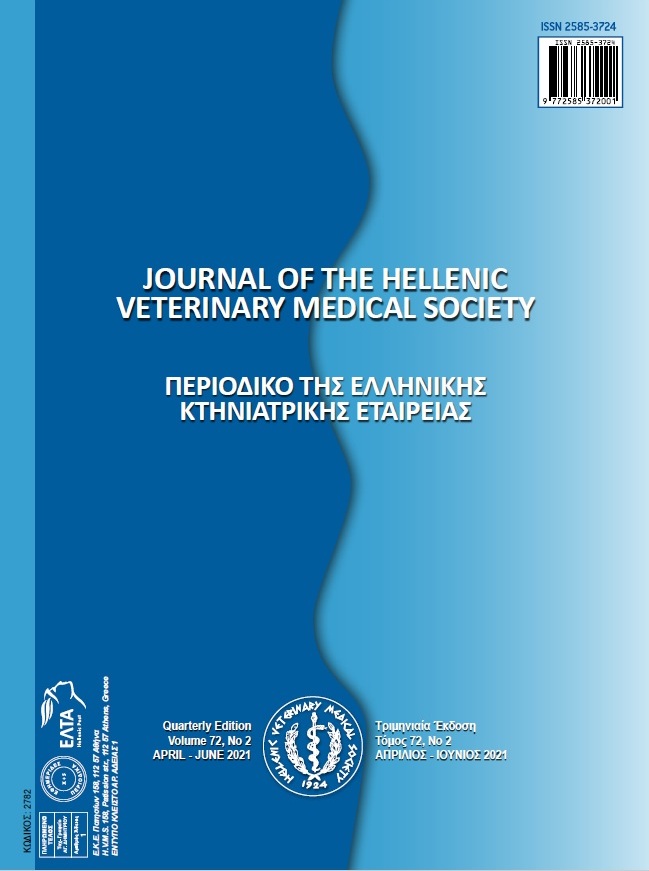Evaluation of blood omega-3 and omega-6 levels in healthy female dogs and female dogs with mammary tumours
Abstract
The study was designed to determine the blood levels of omega fatty acids, which have an important role in the etiology of mammary tumours, in healthy and female dogs with mammary tumour. The study was carried out in 9 female dogs with histologically confirmed mammary tumour and a control group with 9 healthy female dogs without clinical mammary neoplasia. 10 ml cephalic blood samples were collected by using a 21G x 1.5΄΄ blood collecting needle into anticoagulated tubes before the surgical removing of the mammary masses. Mastectomy was performed in all female dogs with mammary tumours and all the mammary specimens were sent to laboratory for histopathological examination. According to histopathological diagnosis results, all of the tumours were found to be malignant. Omega-3 levels were found to be higher in healthy female dogs (p<0.001) whereas omega-6 levels were higher in female dogs with mammary tumour (p<0.001). These observations support the notion tha thigh levels of omega-3 fatty acids might proove to have a protective role on mammary tumor formation in female dogs, while increased levels of omega-6 fatty acids may be related to an increased mammary tumor risk. This difference between omega-3 and omega-6 levels was found to be caused mainly by Eicosatrienoic acid. It is concluded that omega fatty acids mayplay an important role in the biological mechanism of mammary tumour in female dogs.
Article Details
- How to Cite
-
TUZLU, T., SARIBAY, M., KOLDAS ÜRER, E., KÖSE, A., GÖZER, A., YAKAN, A., & ÖZSOY, Ş.Y. (2021). Evaluation of blood omega-3 and omega-6 levels in healthy female dogs and female dogs with mammary tumours. Journal of the Hellenic Veterinary Medical Society, 72(2), 2925–2934. https://doi.org/10.12681/jhvms.27534
- Issue
- Vol. 72 No. 2 (2021)
- Section
- Research Articles

This work is licensed under a Creative Commons Attribution-NonCommercial 4.0 International License.
Authors who publish with this journal agree to the following terms:
· Authors retain copyright and grant the journal right of first publication with the work simultaneously licensed under a Creative Commons Attribution Non-Commercial License that allows others to share the work with an acknowledgement of the work's authorship and initial publication in this journal.
· Authors are able to enter into separate, additional contractual arrangements for the non-exclusive distribution of the journal's published version of the work (e.g. post it to an institutional repository or publish it in a book), with an acknowledgement of its initial publication in this journal.
· Authors are permitted and encouraged to post their work online (preferably in institutional repositories or on their website) prior to and during the submission process, as it can lead to productive exchanges, as well as earlier and greater citation of published work.



